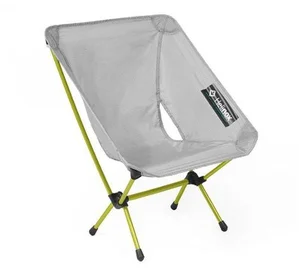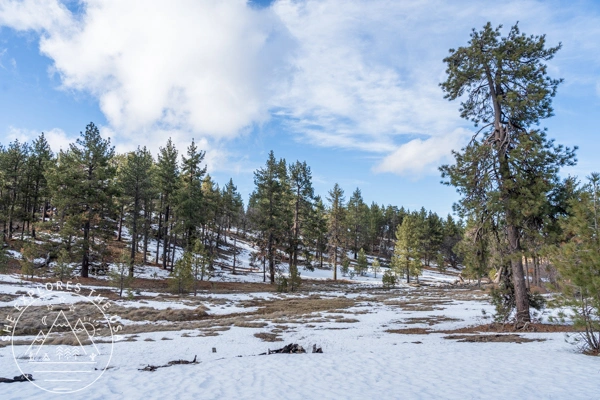7 Leave No Trace Principles: How to Teach Kids
DISCLOSURE: This post may contain affiliate links. If you purchase after clicking one of my links, I may earn a small commission at no extra cost to you. As an Amazon Associate, I earn from qualifying purchases. For more information, see my disclaimer.
Leave No Trace is a set of simple but powerful outdoor ethics designed to protect nature and wildlife. These seven principles, created by the Leave No Trace Center for Outdoor Ethics, guide us on how to enjoy the outdoors responsibly and reduce our environmental impact. Knowing why Leave No Trace is important helps every outdoor lover, from hikers to campers, care for natural places so they stay beautiful and healthy for years. In this post, I’ll explain each Leave No Trace principle clearly and share fun, practical ways to teach them to kids.
What is Leave No Trace?
Leave No Trace (LNT) is a set of simple outdoor ethics that encourage responsible and sustainable behavior in nature. These principles help us reduce our environmental impact and keep natural spaces beautiful for everyone to enjoy.
The seven Leave No Trace principles apply to everyone who spends time outdoors, from experienced hikers and campers to those who visit nature occasionally. At its core, Leave No Trace is about respecting nature and being mindful of how our actions affect the land, plants, and animals.
By following these guidelines, we protect fragile ecosystems, prevent soil erosion, stop habitat loss, and reduce disturbance to wildlife. Whether it’s planning your trip, traveling on durable surfaces, or properly disposing of waste, each principle teaches us how to care for the outdoors responsibly.
Why Are the “Leave No Trace” Principles Important?
The seven Leave No Trace principles help protect nature by promoting environmental conservation. They guide us to care for fragile ecosystems and keep outdoor spaces beautiful for future generations.
Following these principles also improves our outdoor experience and teaches us personal responsibility. Leave No Trace encourages respect for wildlife and other visitors. By reducing litter, damage, and disturbances, we can all enjoy safe and sustainable adventures in nature for years to come.
Leave No Trace Essential Gear
Practicing Leave No Trace is easier when you’re prepared with the right gear. Here are a few essentials that support low-impact, responsible outdoor adventures.
First Aid Kit
Accidents happen, even on short hikes. A compact first aid kit keeps you prepared and helps you care for yourself or others without leaving an impact behind.
Satellite Phone or Emergency Beacon
When you’re exploring remote areas with no cell service, a satellite communicator is essential for both safety and peace of mind. Instead of scrambling for a signal or risking harm trying to get help, you can message, navigate, and even trigger an SOS, without leaving your campsite.
I personally use the Garmin inReach 67i, which combines GPS navigation and satellite messaging in one device. But if you’re just looking for a simple way to message from the backcountry, the Garmin inReach Messenger+ is a lighter, more affordable option. Check out my full review and comparison of Garmin inReach devices here.
Garmin GPSMAP 67i

- inReach Satellite Messaging & SOS
- Advanced Navigation
- Extended Battery Life
Garmin inReach Messenger Plus

NEW
- Photo & Voice Messaging
- Inreach Technology
- Phone Charging
San Diego Safari Park Guide: Hours, Attractions & Tips
If you’re looking for unforgettable things to do in San Diego, don’t miss the San Diego Safari Park. Just 35…
Diamond Valley Lake: How to Enjoy The Wildflowers
Are you seeking a fun family adventure in Southern California? With all the rain we got this year, flowers are…
Mount Laguna: Snowy Escapes and Scenic Trails
Living at the beach in San Diego does not mean we have to miss out on the snow! So off…
Camp Stove
Instead of building a campfire, which can scar the land and damage fragile ecosystems, use a compact backpacking stove. It’s faster, cleaner, and truly leaves no trace.
I’ve used the MSR Mini Stove kit for years and love how reliable and lightweight it is. I’ve also included a few other top-rated alternatives below to help you find the best fit for your setup.
Trash Bags or Pack-Out Pouches
Pack out all trash, including food waste and hygiene items. A few reusable trash bags or odor-proof pouches make it easy and clean.
Binoculars
Observing wildlife from a distance keeps animals safe and reduces stress. A pair of binoculars helps kids and adults enjoy nature respectfully.
Lightweight Chair or Pad
Stay comfortable on the trail without harming delicate terrain. A lightweight camp chair or sit pad keeps you clean, supported, and off fragile ground like moss, wildflowers, or muddy soil.
I’ve used the REI Flexlite Air Chair for years and still love how packable and comfy it is. I’ve also reviewed and compared a few other great ultralight chair options. Check out my full comparison here.
Flexlite Air Chair
- 1 lb
- Ultralight & Compact
- Best for sturdy flat surfaces
NEMO Moonlite Elite

- 1 lb 2 oz
- Reclining
- Best for stability on soft ground
Helinox Chair Zero

- 1 lb
- Optional groundsheet
- Best for higher weight capacity
San Diego Safari Park Guide: Hours, Attractions & Tips
If you’re looking for unforgettable things to do in San Diego, don’t miss the San Diego Safari Park. Just 35…
Diamond Valley Lake: How to Enjoy The Wildflowers
Are you seeking a fun family adventure in Southern California? With all the rain we got this year, flowers are…
Mount Laguna: Snowy Escapes and Scenic Trails
Living at the beach in San Diego does not mean we have to miss out on the snow! So off…
The 7 Leave No Trace Principles
1: Plan Ahead and Prepare
Planning and preparation are key to a safe and eco-friendly outdoor trip. This principle forms the foundation of Leave No Trace, helping you reduce your impact on nature while enjoying your adventure.
Research Your Destination
Before you go, check if your destination requires permits, has fire restrictions, or other rules. This research can save you from surprises like needing a parking pass at the trailhead or closed trails.
Check Weather Conditions
Always look at the weather forecast and plan for possible hazards. Bring the right clothing and gear to stay comfortable and safe. Dressing in layers is a smart way to adjust to changing temperatures.
First aid and safety
Carry a first aid kit and know how to use it. This will help you handle minor injuries and stay calm if someone else needs help on the trail.
Consider Emergency Communication Tools
If you’ll be out of cell phone range, a satellite phone or emergency beacon can be a lifesaver. These devices allow you to call for help and let your family track your location during your trip.


Mindset Preparation
Leave No Trace is not just about following the seven principles; it’s about adopting a mindset of responsibility and respect for nature. Understanding why Leave No Trace is important helps you make better decisions to minimize your impact on the environment during every outdoor adventure.
Choose the Right Group Size
When it comes to Leave No Trace, bigger groups aren’t better. Larger groups tend to cause more damage to trails, plants, and wildlife habitats. Choosing a smaller, manageable group size reduces environmental impact. Make sure everyone in your group knows the Leave No Trace principles and follows them to protect natural spaces.
2: Travel and Camp on Durable Surfaces
Minimizing our impact on nature means choosing where we walk and camp carefully. Principle 2, Travel and Camp on Durable Surfaces, teaches us to protect fragile environments by sticking to strong, lasting ground.
Use Established Trails

Always stay on marked trails when hiking or backpacking. Using established paths helps prevent damage to delicate plants and stops soil erosion. Walking off-trail can crush sensitive vegetation and disturb wildlife, so it’s important to keep to the beaten path.
Camp on Durable Surfaces

When setting up camp, choose durable areas like rock, gravel, or sand. Avoid fragile places with plants or flowers to help protect the ecosystem. Also, camp at least 200 feet away from lakes, streams, or other water sources to prevent pollution and protect aquatic life.
By following this principle, we respect the environment and keep our impact as low as possible. Responsible hikers and campers preserve nature’s beauty by traveling and camping on durable surfaces.
3: Dispose of Waste Properly
Proper waste disposal is a key part of following Leave No Trace principles. The rule “pack it in, pack it out” means you should take all your trash with you. Leaving waste behind not only ruins the natural beauty but can also harm wildlife and fragile ecosystems.

Take Your Trash Home
Always carry a small bag to pack out all trash and waste from your outdoor trips. This includes food wrappers, used tissues, and hygiene products. Even natural items like banana peels or orange peels should be packed out because they can take a long time to break down in some environments.
Dispose of Human Waste Safely
Use designated toilet facilities whenever possible. If none are available, bury human waste in a cathole 6 to 8 inches deep, at least 200 feet away from water sources, trails, and campsites.
Protect Water Sources
Never dump waste or soap into lakes, rivers, or streams. These water sources are vital for local wildlife. When washing, use biodegradable soap, and do so at least 200 feet away from any water to avoid contamination.
By properly disposing of all waste, you help keep natural areas clean and healthy, leaving the places you visit better than you found them.
4: Leave What You Find
A key Leave No Trace rule is to leave nature as you found it. Only take photos and memories home.
Picking up rocks, shells, or flowers might seem small. But these things give shelter and food to animals. Taking them can hurt plants and wildlife.
In many places, it’s illegal to take sand from beaches. Stacking rocks can also harm animals and is banned in some parks.
By leaving nature alone, you help keep it beautiful and safe for others.
5: Minimize Campfire Impact
Sitting around a campfire is a fun way to spend time outdoors. But campfires can leave lasting damage, especially in fragile places like deserts. Dry plants, little water, and sensitive ecosystems make campfires risky in these areas. That’s why it’s important to minimize your impact and follow Leave No Trace rules when using campfires.
Do You Really Need a Campfire?
Think about whether you need a campfire for warmth or cooking, or if it’s just for fun. You can stay warm with extra clothing and cook with a camp stove instead.
Campfire best practices
- Use established fire rings when available to protect the ground.
- Keep your fire small and manageable. It’s about warmth and ambiance, not a big blaze.
- Only burn small, dead, and downed wood. Don’t cut live trees or plants.
- Fully put out your fire before sleeping or leaving. Fires can restart if not properly extinguished. Pour water, stir the ashes, and feel to make sure everything is cool.
- Leave No Trace by cleaning up all fire remains, including ashes, burned wood, and charred rocks.
6: Respect Wildlife
Seeing wildlife while outdoors is exciting, but remember that the wilderness is their home. We must respect wild animals to help them stay safe and keep their natural behaviors. Getting too close can cause stress or danger for both animals and people.
How to Respect Wildlife and Practice Leave No Trace
- Keep a safe distance. Getting too close can scare animals and make them defensive. Use a camera or zoom lens to watch them from afar.
- Never feed wild animals. Human food can harm their health and cause them to rely on people. For example, bears that get used to human food may become aggressive and might be euthanized.
- Keep noise low. Loud sounds can frighten wildlife, so speak softly and avoid unnecessary noise.
- Store food and trash securely. Proper storage stops animals from coming to campsites for food, which helps protect both wildlife and humans.
By respecting wildlife, we protect their homes and ensure safe, natural encounters for everyone.
7: Be Considerate of Other Visitors

Many people go outdoors to escape the noise of daily life and enjoy quiet time in nature. Respecting their need for peace helps everyone relax and recharge.
Keep Noise Levels Down
One common complaint from hikers is loud music or noise on trails. Keeping your voice and devices quiet lets others enjoy the natural sounds and calm of the wilderness.
Yield to others on the trail
Practice good trail etiquette by stepping aside to let faster hikers pass. Uphill hikers have the right of way. Hikers yield to bikers, and both yield to horseback riders. Following these rules helps everyone have a safe and pleasant experience.
Ways to teach kids to Leave No Trace
Teaching kids the Leave No Trace principles is important. It helps them respect nature and learn responsible outdoor habits early. When children understand how to reduce their impact, they help protect natural spaces and develop a lifelong love for the outdoors.
Fun Ideas to Teach Leave No Trace to Kids
Nature Scavenger Hunts
Organize scavenger hunts in parks or forests where kids find and pick up trash and non-natural items. This activity teaches the “Leave What You Find” principle while making cleanup fun. Here’s a book to help teach kids to pick up trash from the forest.
Wildlife Observation
Take kids on nature walks to watch animals from a safe distance. Explain how getting too close can disturb wildlife, highlighting the importance of respecting animals in their natural homes.
Nature Journals
Give kids journals to write and draw about their outdoor adventures and what they learn about protecting nature. Journals help kids reflect on Leave No Trace ideas in a creative way. Check out this camping journal for kids for activity ideas. I also found this hiking journal for kids with prompts and space to draw and write.
Leave No Trace Badges
Create a badge system where kids earn awards for following Leave No Trace principles. Printable badges can motivate them to practice good habits outdoors.
Field Trips and Nature Centers
Visit nature centers or join guided hikes with park rangers. These educational trips reinforce Leave No Trace lessons with hands-on learning.
Outdoor Ethics Camp
Consider enrolling kids in camps or programs that focus on outdoor ethics and Leave No Trace practices. Many scouting organizations and environmental groups offer such opportunities.
FAQ About Leave No Trace
What does “Leave No Trace” mean?
Leave No Trace means enjoying the outdoors responsibly and leaving natural spaces as you found them, or better. It’s a set of seven principles that help reduce human impact on the environment.
Why is Leave No Trace important?
Leave No Trace is important because it protects ecosystems, wildlife, and natural beauty. These principles help ensure that outdoor places stay safe, clean, and accessible for everyone, now and in the future.
What are the 7 Leave No Trace principles?
- Plan Ahead and Prepare
- Travel and Camp on Durable Surfaces
- Dispose of Waste Properly
- Leave What You Find
- Minimize Campfire Impact
- Respect Wildlife
- Be Considerate of Other Visitors
Who created the Leave No Trace principles?
The Leave No Trace Center for Outdoor Ethics developed the principles. The organization provides outdoor education and promotes sustainable recreation worldwide.
Do the Leave No Trace principles apply to everyone?
Yes. Whether you’re an experienced backpacker or just taking a short hike, these principles apply to all outdoor activities. Anyone who visits nature can practice Leave No Trace.
Are there printable Leave No Trace resources?
Yes! Many parks and websites offer printable Leave No Trace checklists, posters, and kids’ activity sheets. These can be great tools for families, educators, and group leaders.
How can I teach Leave No Trace to kids?
Start with simple, fun activities like scavenger hunts, nature walks, and journaling. Use books, games, or badge systems to make it engaging. Check out the kids’ section in this post for gear and ideas!
Can Leave No Trace principles be used at home or in city parks?
Absolutely. You can apply the Leave No Trace mindset anywhere, by picking up litter, staying on designated paths, respecting wildlife, and minimizing your waste, even in your own neighborhood.
Final Thoughts on Leave No Trace
The Leave No Trace principles encourage conservation, education, and sustainable outdoor practices. By following these guidelines, we help keep wild places natural and beautiful for future generations.
When we adopt Leave No Trace in our outdoor activities, we take an active role in protecting and preserving the environment. Every small action counts toward a healthier planet.
Post originally published on September 16, 2023, and last updated on December 7, 2025.



















